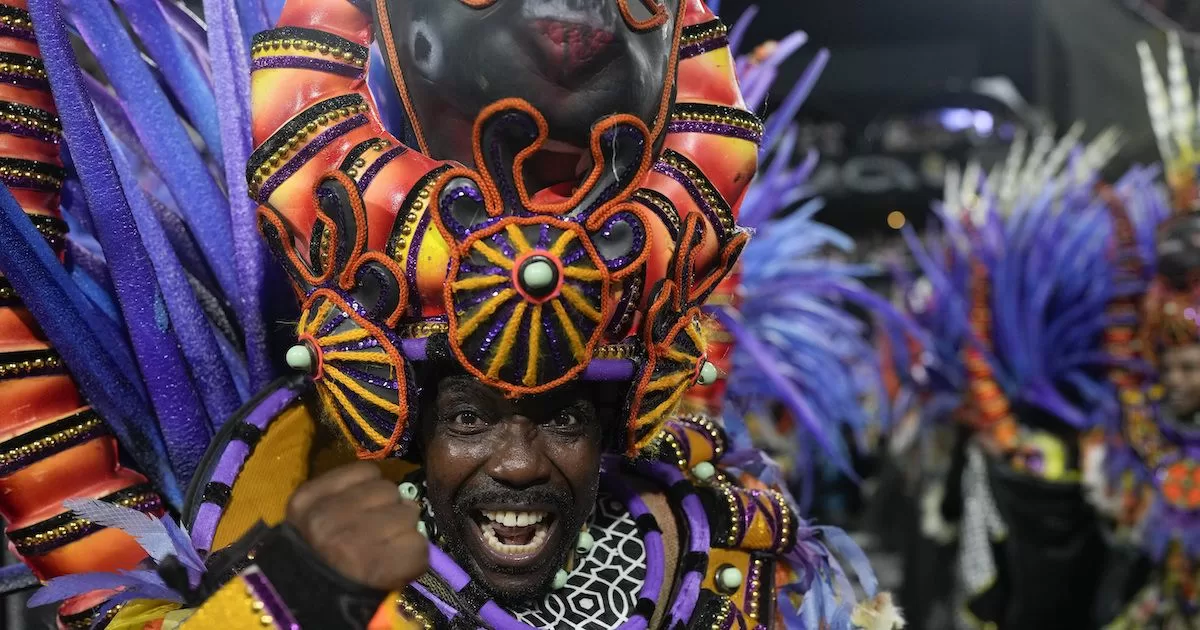Here are five things you need to know about this celebration, claimed as “the greatest show on Earth.”
The “schools” and the Sambadrome
Although the carnival atmosphere is felt throughout February, the parade of the “schools” in the Sambódromo attracts enormous attention.
This 700-meter walkway is flanked by stands with capacity for 70,000 people, with spectators coming from all over the world.
This year 12 schools will parade, the so-called “special group” that, like soccer clubs, have fans who follow them and cheer on the big night.
Also like in football, there are different divisions and schools are promoted and relegated. The competition to reach the top is fierce: there are 120 in Rio alone.
The traditional Imperatriz Leopoldinense (last year’s champion), Portela, Mangueira and Beija Flor are some of those competing this year for the biggest prize.
With a million-dollar production, the schools advance to the rhythm of a samba composed for the occasion, which evokes current political and social issues or Brazil’s past.
Each procession has about 3,000 people, impressive costumes or “fantasies” and enormous chariots or “allegaries”, on whose heights the “queens” strut with their crowns of feathers and sequins.
They have 60 to 70 minutes to seduce the jury, which evaluates aspects such as the costumes, the development of the theme, the drums and the allegories, among others.
Tickets range from $14 to $400.
The blocks
But many consider that the real carnival happens far from the Sambadrome, in the “blocos.”
These are groups, from very modest to very sophisticated, that call for massive parties with live music and dancing in the middle of the street and march in procession.
Percussion, wind instruments and creative costumes are essential. Alcohol, even when the performances start at 7 in the morning, flows in abundance.
There are blocks for all tastes. Loucura Suburbana, Tá Pirando, Pirado, Pirou! and Zona Mental, for example, are from patients and workers in mental health hospitals.
Sergeant Pimenta’s Bloco plays Beatles songs. Or Bésame Mucho, which plays boleros, tangos and even the famous “Despacito”, all to the rhythm of samba. Or El Bloco by Anitta!, the queen of Brazilian funk, who will visit a dozen cities.
Some 600 blocos parade this year in the “cidade maravilhosa.”
The carnival in reales
This year the Rio carnival received the largest investment in its history from the state government, 62.5 million reais (USD 12.5 million). Of those, 40 million are for the “schools.” The Rio Mayor’s Office allocated another 40 million to them.
Some 5.3 billion reais ($1 billion) will enter the local economy during the carnival, according to the National Confederation of Trade in Goods, Services and Tourism (CNC), almost 20% more than in 2023.
Throughout Brazil, the injection will be 9 billion reais ($1.8 billion).
Water guns, robberies and eucalyptus
Not everything is joy. The state of Bahia (northeast) recently banned the use of water guns in celebrations, after images went viral in which a woman was attacked in a block with water jets.
Crowds are also conducive to theft and warnings multiply on social networks. One victim said an alleged vendor used a tray of candy to cover his hands while he rummaged through revelers’ bags and pockets.
It’s not all glamor either. The prefecture of Rio reported that, after the celebrations, 2,000 liters of concentrated eucalyptus essence will be used to eliminate the smell of urine from the streets.
Not only does Rio experience the carnival
Other cities in Brazil also come to a standstill with the carnival.
The authorities estimate that 15 million people will take to the streets in Sao Paulo, where 600 blocos parade.
In Belo Horizonte (Minas Gerais, southeast), there will be about 5 million; in Recife (Pernambuco, northeast), almost 3 million.
Precisely a block in that city – and not in Rio – holds a Guinness record: the Galo da Madrugada has been considered since 1994 “the largest Carnival block in the world.” Last year it brought together 2.5 million people.
Source: AFP

